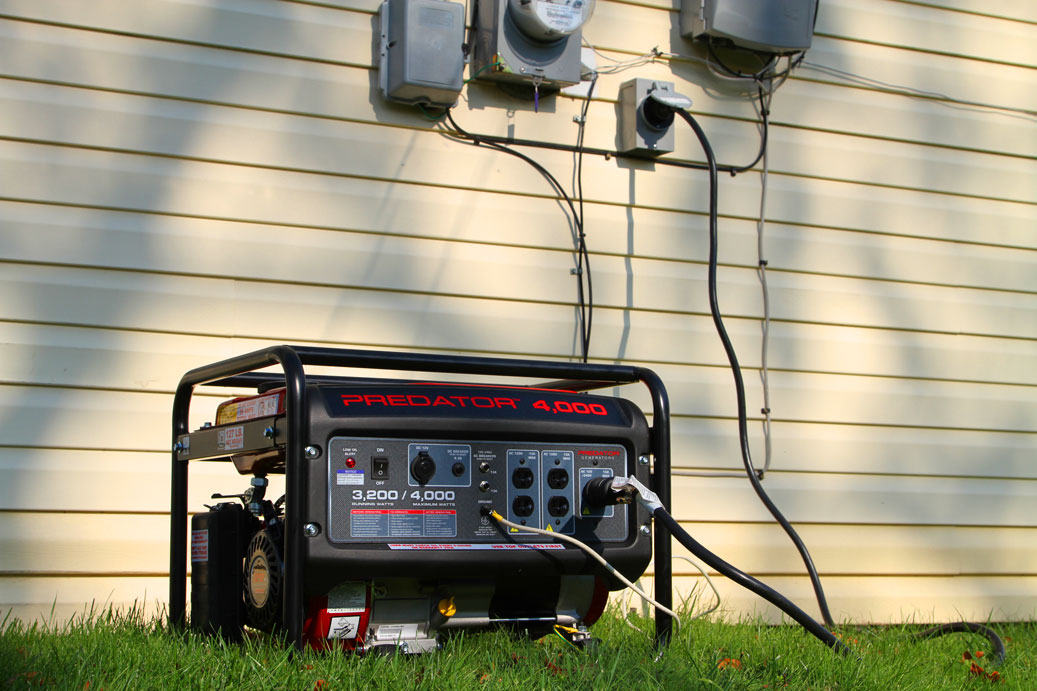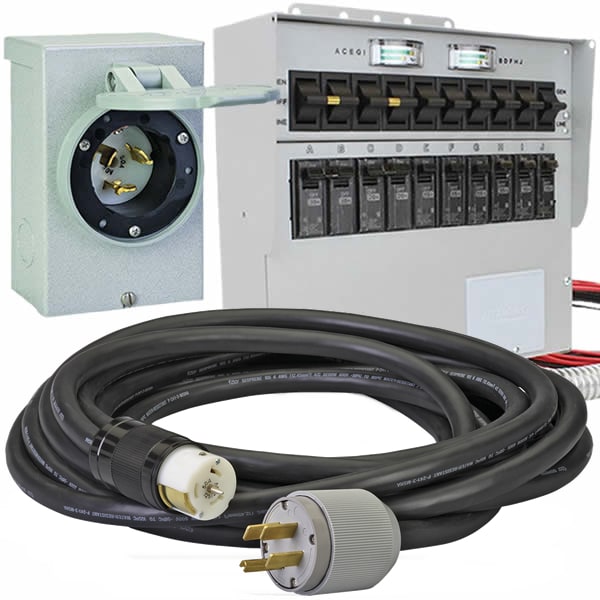To hook up a generator, first, ensure it’s placed outside to avoid carbon monoxide poisoning. Then, connect it to your home using a transfer switch.
Power outages can strike without warning, plunging your home into darkness and halting daily activities. In these moments, a generator becomes a crucial asset, providing a lifeline by powering essential appliances and lights. The process of hooking up a generator might seem daunting, but it’s a straightforward task with the right guidance.
It not only ensures your comfort during power outages but also safeguards your home from potential electrical hazards. A generator can be a game-changer for those living in areas prone to severe weather or with unreliable power grids. By following simple steps and adhering to safety precautions, you can seamlessly integrate this power backup into your home, ensuring peace of mind regardless of the electrical grid’s stability.
Introduction To Generator Setup
Setting up a generator is key to reliable backup power. It ensures electricity during outages. Proper installation is crucial for safety and efficiency. This guide will cover essential steps and tips for hooking up a generator.
Importance Of Safe Installation
Safety comes first with generators. Incorrect setup can cause fires or electric shocks. Always follow the manufacturer’s instructions. Use transfer switches to connect generators safely. Ensure proper ventilation to avoid carbon monoxide poisoning. A professional electrician can help with complex installations.
Benefits Of Having A Backup Power Source
- Uninterrupted power supply during outages
- Keeps essential appliances running
- Increases home safety and comfort
- Protects from financial losses due to spoiled food or halted business operations
Choosing The Right Generator
Preparing for an outage? A reliable generator can be a game-changer. Let’s explore the essentials in picking the perfect unit for your needs.
Types Of Generators
- Portable Generators: Ideal for small homes or outdoor activities.
- Inverter Generators: Provide clean power for sensitive electronics.
- Standby Generators: Automatically power your home during outages.
- Industrial Generators: Best for large-scale or commercial use.
Determining Power Requirements
Assess your power needs to choose the right generator capacity.
- List essential appliances and devices.
- Check their wattage ratings.
- Add up total wattage for a baseline power requirement.
- Consider a generator with a higher output for safety margin.
Remember to account for starting watts, which are higher than running watts.
| Appliance | Running Watts | Starting Watts |
|---|---|---|
| Refrigerator | 700 W | 2200 W |
| Furnace | 800 W | 1600 W |
| Window AC | 1200 W | 3600 W |
Use this table as a guide to calculate your power needs accurately.
Pre-installation Safety Tips
Pre-Installation Safety Tips ensure a smooth start to hooking up a generator. Safety comes first, and there are key steps to follow. These steps prevent accidents and comply with local guidelines. Let’s dive into what you need to know before installation.
Reading The Manual
Every generator comes with a manual. This guide contains crucial information. It covers safety warnings, setup instructions, and maintenance advice. Always read the manual carefully. It helps you understand your generator’s specific requirements. This step is not just recommended; it’s essential.
Understanding Local Codes And Regulations
Local codes and regulations vary by area. They dictate generator installation and operation. It’s important to be aware of these rules. Compliance is key for legal and safety reasons. Contact local authorities or a licensed electrician. They can provide the necessary information.
To summarize, before installing a generator, you need to focus on safety. Read the manual thoroughly and understand local codes. These actions ensure a safe and compliant setup.
Tools And Materials Needed
Setting up a generator requires certain tools and materials. This guide will help you gather everything you need before you start. It’s important to be prepared. This way, you ensure safety and efficiency.
List Of Essential Tools
- Wrenches – For tight connections
- Screwdrivers – To secure parts
- Wire strippers – For cable preparation
- Voltage tester – To ensure safety
- Drill – For mounting support
Safety Gear And Equipment
While working, safety comes first. Always use the right gear.
| Gear | Use |
|---|---|
| Gloves | Protect hands |
| Goggles | Safeguard eyes |
| Ear protection | Reduce noise harm |
| Boots | Prevent foot injuries |
Setting Up The Generator
Setting up a generator is crucial for its safe and efficient use. Proper installation ensures reliable power when you need it most. Let’s dive into the steps to get your generator up and running.
Selecting The Location
Choosing the right spot for your generator is the first step. Keep these points in mind:
- Outdoor Use: Generators should always be outside to prevent carbon monoxide poisoning.
- Flat Surface: Place it on a stable, flat area to avoid tipping over.
- Distance from Windows: Keep it at least 20 feet away from windows and doors to prevent fumes from entering the house.
- Weather Protection: Use a canopy or generator tent for protection against rain and snow.
Assembling The Generator
After selecting the perfect location, follow these steps to assemble your generator:
- Read the Manual: Always start by reading the manufacturer’s instructions.
- Attach Wheels: If your generator has wheels, attach them for easy movement.
- Fill with Oil and Fuel: Use the recommended oil type and fill the tank with fresh fuel.
- Connect Battery: If it has an electric start, connect the battery.
Once assembled, you are ready to power it up. Always ensure safety by keeping children and pets away from the operating generator.

Credit: www.ecicomfort.com
Electrical Connections
When setting up a generator, making the right electrical connections is crucial. This section will guide you through safely connecting your generator to your home’s electrical system. Properly linking to the transfer switch and grounding the generator are key steps to ensure safety and functionality.
Connecting To The Transfer Switch
Connecting your generator to a transfer switch is a safe way to power your home. Follow these steps:
- Switch off your main power supply.
- Open the transfer switch’s cover.
- Connect generator cables to the transfer switch.
- Make sure all connections are tight and secure.
- Close the transfer switch cover.
- Switch the transfer switch from ‘Line’ to ‘Generator’.
This process ensures that your generator powers your home safely when the main power is out.
Grounding The Generator
Grounding your generator is essential for safety. Follow these steps:
- Locate the grounding bolt on your generator.
- Attach a copper grounding wire.
- Secure the other end to a grounding rod.
- Drive the rod at least 8 feet into the ground.
- Ensure the connection is tight and free from rust.
These actions protect you from electric shocks and keep your generator working well.
Testing The Setup
Before relying on a generator, test the setup. A dry run ensures everything works. It highlights issues before an emergency. Let’s perform a dry run and troubleshoot common issues.
Performing A Dry Run
Testing your generator is a key step. You’ll need to:
- Read the manual.
- Connect the generator to essential items.
- Start the generator following manufacturer instructions.
- Check if the connected items work.
Write down how long the setup takes. Note any hiccups for improvement.
Troubleshooting Common Issues
Some issues might arise during a dry run. Here’s how to address them:
| Issue | Solution |
|---|---|
| Generator won’t start | Check fuel, oil, and battery. Ensure switches are on. |
| Power isn’t stable | Inspect cords and connections. Limit appliance use. |
| Noisy operation | Secure loose parts. Place the generator on a flat surface. |
Keep the manual handy for specific troubleshooting. Regular maintenance prevents many issues.

Credit: www.electricgeneratorsdirect.com
Maintenance And Care
Maintaining your generator is key to its longevity and safety. Proper care ensures it’s ready when you need it. Let’s explore the essentials of generator maintenance.
Routine Checkups
Regular inspections keep your generator in top shape. Follow these steps:
- Check oil levels monthly.
- Replace oil after 100 hours of use.
- Inspect air filters for cleanliness.
- Test battery and clean terminals.
- Run the generator every 3 months.
Storing The Generator
Proper storage is crucial for a generator’s performance. Stick to these tips:
- Store in a cool, dry place.
- Keep away from moisture.
- Use fuel stabilizer for long-term storage.
- Cover the generator to prevent dust build-up.
Safety During Operation
Operating a generator safely is crucial. Careless handling can lead to dangerous situations. Follow these steps to ensure safe operation.
Monitoring Carbon Monoxide Levels
Carbon monoxide (CO) is a silent killer. It’s colorless and odorless. Generators produce CO. Never use a generator indoors. Always install CO detectors near your generator. Check CO levels regularly. If the alarm sounds, move to fresh air immediately. Call for help.
Refueling Precautions
Generators get hot when they run. Hot engines can ignite fuel. Turn off your generator before refueling. Let it cool down first. Store fuel in approved containers. Keep containers away from the generator. This prevents accidents.
Always follow these safety tips. They keep you and your loved ones safe. They also ensure your generator runs properly.

Credit: www.ecicomfort.com
Frequently Asked Questions
What Is Required For Generator Hookup?
Connecting a generator typically requires a transfer switch, proper electrical cables, and adherence to local building codes for safety.
Can I Connect A Generator Directly To My House?
Directly connecting a generator to your house without a transfer switch is dangerous and violates electrical codes. Always use a transfer switch.
How Often Should I Test My Generator?
Testing your generator monthly ensures it operates correctly and is ready for use during an outage. Follow the manufacturer’s testing guidelines.
What Size Generator Do I Need For My Home?
The size of the generator needed depends on the total wattage of the appliances and devices you wish to power during an outage.
Are Portable Generators Safe For Indoor Use?
Portable generators emit carbon monoxide and must never be used indoors, in garages, or close to windows and vents to prevent poisoning.
Conclusion
Wrapping up, mastering generator hook-up is vital for safe, reliable power during outages. Remember, safety trumps all — never cut corners. Practice these steps and you’ll be prepared for any emergency. Now you’re ready to keep the lights on when the grid goes down.
Stay powered, stay safe!




